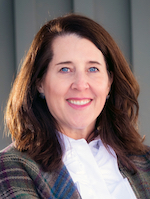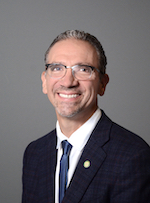Health equity and dentistry




It’s more than just seeing patients.
It’s helping them understand what dental care is.
It’s giving easily understood explanations about dental procedures and making patients feel valued.
Health equity means everyone has a fair and just opportunity to be as healthy as possible. But before a patient ever gets to the dental chair, there are many factors to consider that may be going on behind the scenes.
“The COVID-19 pandemic has underscored the systemic inequalities in our health care system that severely impact populations along racial and geographic lines,” ADA President Daniel J. Klemmedson, D.D.S., M.D., said. “Removing barriers to care is essential in ensuring that every community receives access to the quality and affordable health care they deserve.”
Barriers to care
In April, the ADA Health Policy Institute published a series of infographics and data looking into racial disparities in oral health. The data also highlighted the dental care utilization among the U.S. population, finding that for all age groups, Hispanics and Blacks are most likely to face cost barriers to dental care.
Patients often face multiple barriers, especially when they are looking for dental care. These barriers can range from struggles with oral health literacy, child care and transportation to problems finding a dentist taking new patients or annual cap limits in Medicaid. Patients who didn’t grow up seeing a dentist regularly may be afraid. Some may have lost their insurance after retiring or losing a job.
Nearly 80 million adults and children were enrolled in Medicaid and the Children’s Health Insurance Program as of November 2020, according to the Centers for Medicare & Medicaid. That number includes more than 6 million who signed up during the pandemic.
“It’s difficult to value oral health and making a dental appointment if you are struggling with food, shelter and housing insecurities,” said Jessica Meeske, D.D.S., chair of the ADA Council on Advocacy for Access and Prevention.
Tooth decay remains the most chronic condition for children and adults, and nearly half of all adults over 30 have some form of periodontal disease, according to the Centers for Disease Control and Prevention.
Growing up in rural Nebraska, Dr. Meeske didn’t have to look very far to see the importance of health equity. Her mom was a school nurse who always made sure the children in her charge had eyeglasses or dental care regardless of their family income.
“She just found a way without complaint so these kids could see the chalkboard and not be sitting in school with a toothache,” she said. “In addition, both my dental school education at the University of Missouri-Kansas City School of Dentistry and pediatric residency training at the University of Iowa College of Dentistry provided me with opportunities to care for patients with Medicaid and instilled in me the importance of dentistry’s social contract with society.”
In her own dental practice, Dr. Meeske, a pediatric dentist, said she works hard to meet the needs of the Medicaid population in her community, including providing her staff with the education and tools to address every patient’s unique problems and concerns by adopting a mindset of compassion and helpfulness.
“I also limit my Medicaid by age or referral by general dentists,” she said. “Much of the success is in learning how to listen to parents’ concerns and accept the fact that I can only provide the best care I can with the available resources that the family has and that my Medicaid program pays for. I’ve adopted an attitude that none of the problems and barriers we face in our choice to care for the Medicaid population are unsolvable. It just takes commitment.”
Outside the box
In some cases, helping patients get the dental care they need might mean diverting from business as usual.
“So many dentists, we take our time with our patients and that’s a great thing,” said Brett Kessler, D.D.S., ADA 14th District trustee and liaison to the Council on Advocacy for Access and Prevention. “We’ll do a full, comprehensive exam with X-rays and maybe a cleaning on that first appointment but no treatment. If the patient does require follow-up treatment, it means they’re going to have to come back. But for some patients, taking time off from work isn’t easy.”
Sometimes the best gift a dentist can give a patient is to get them out of pain.
“A lot of times people in pain aren’t thinking that clearly and they just want to be out of pain. This happens with all patients,” Dr. Kessler said. “But before we can do comprehensive care, we have to first get them out of pain. Then we can formulate a plan to stabilize things and have a discussion of what their goals are for their teeth. But those conversations never happen when they’re in pain or have an infection.”
Of course, there is always the possibility that the patient might never come back, but Dr. Kessler thinks it’s worth it to meet them where they are.
“I used to be a dentist who didn’t want anyone to dictate my fees and took no insurance,” he said. “I created a niche for my practice that brought me happiness but it did nothing for the public. And I thought if patients valued their teeth, they would find ways to make it work.”
Making it work took on new meaning after reading a book he felt spoke to him directly: “Bridges Out of Poverty: Strategies for Professionals and Communities.”
“It really made me see there is so much more to this,” Dr. Kessler said. “How is someone going to pay for dental care if they also need to pay their electric bill or get their kids to school? How are they going to keep their job if they’re missing teeth? It really expanded my viewpoint. These patients have to come on Saturdays, they need evening appointments or may have to come with their entire family.”
Action for Dental Health
Most adults have tooth decay at some point in their lives and many don’t get treatment, but making sure more people have access to things like fluoride mouthwash and other preventive measures was a key observation on oral health conditions in Healthy People 2030 — a 10-year plan from the U.S. Department of Health and Human Services that addresses the nation’s most critical public health issues.
The ADA continues to believe that prevention is the ultimate answer to eliminating the vast majority of dental disease.
“We know that prevention works,” Dr. Klemmedson said. “Community water fluoridation, sealants, teaching people how to take care of their families’ teeth and gums, and getting the greatest possible number of children and adults into dental homes are the keys to better oral health for everyone.”
Since 2013, the ADA’s Action for Dental Health initiative has worked to prevent dental disease before it starts and to reduce the proportion of adults and children with untreated dental disease. In 2018, the Action for Dental Health Act became law. The Act allows organizations to qualify for oral health grants to support activities that improve oral health education and dental disease prevention. It also helps groups develop and expand outreach programs that facilitate establishing dental homes for children and adults, including the elderly and those who are blind or disabled.
Programs under the Action for Dental Health umbrella include the Emergency Department Referral Program, which features community partnership models to help patients find dental homes so they don’t have to go to the emergency department for dental treatment. The ADA’s Community Dental Health Coordinator program addresses barriers to oral health by providing patient navigation and addressing barriers such as translation or insurance enrollment for people who typically do not receive care. These barriers are often referred to as the “social determinants of health.”
One of the major elements of the CDHC program involves making sure patients have a friendly face associated with a dental office to help them navigate appointment scheduling and sometimes transportation and childcare so they don’t have to miss an appointment. CDHCs work in schools, health departments or private practices to help accomplish this. They often live in the same communities they serve, thereby creating a “circle of trust,” which is critical to engaging populations into care.
ADA efforts
The ADA is committed to supporting equity in the workforce as well as the public. Earlier this year, the Association held webinars on health equity to educate ADA staff as well as other volunteer leaders. The ADA worked with the National Dental Association and Hispanic Dental Association in presenting the webinars. Both of those organizations, as well as the Society of American Indian Dentists, are part of the Diverse Dental Society, a nonprofit launched in 2020 that “believes in collaborating and assisting its member partners in the pursuit of their institutional missions, in the areas of service, education, leadership and advocacy especially in the underserved arenas.”
The ADA Institute for Diversity in Leadership is designed to enhance the leadership skills of dentists who belong to racial, ethnic and/or gender backgrounds who have been traditionally underrepresented in leadership roles. The Institute Class of 2021-22 will convene in Chicago for two-day sessions on the following dates: Dec. 2-3, 2021; Aug. 11-12, 2022; and Dec. 1-2, 2022. There is no fee to apply and participation is open to all active, licensed dentists residing in the U.S. regardless of their ADA membership status. The application deadline is May 31, 2021. Visit the webpage for more information.
The ADA is on the record supporting two bills in the current Congress that address health equity issues. S 54, the Strengthening America’s Health Care Readiness Act, calls for additional funding for the National Health Service Corps as well as establishing an NHSC Emergency Service demonstration project. HR 379, the Improving the Social Determinants of Health Act, would create a Social Determinants of Health Program at the Centers for Disease Control and Prevention.
The ADA believes these bills would address existing health workforce shortages and help improve health equity in underserved communities.
“Social determinants such as access to healthy food, good job opportunities, reliable transportation, safe housing and educational opportunity can have a large impact on health, including oral health,” Dr. Klemmedson said. “The ADA is proud to support legislation such as this and encouraged to see lawmakers prioritizing the importance of oral health for all.”
“When we have this shared vision of oral health equity for all and learn how to transcend barriers, the rewards in the end far outweigh the challenges,” Dr. Meeske said



